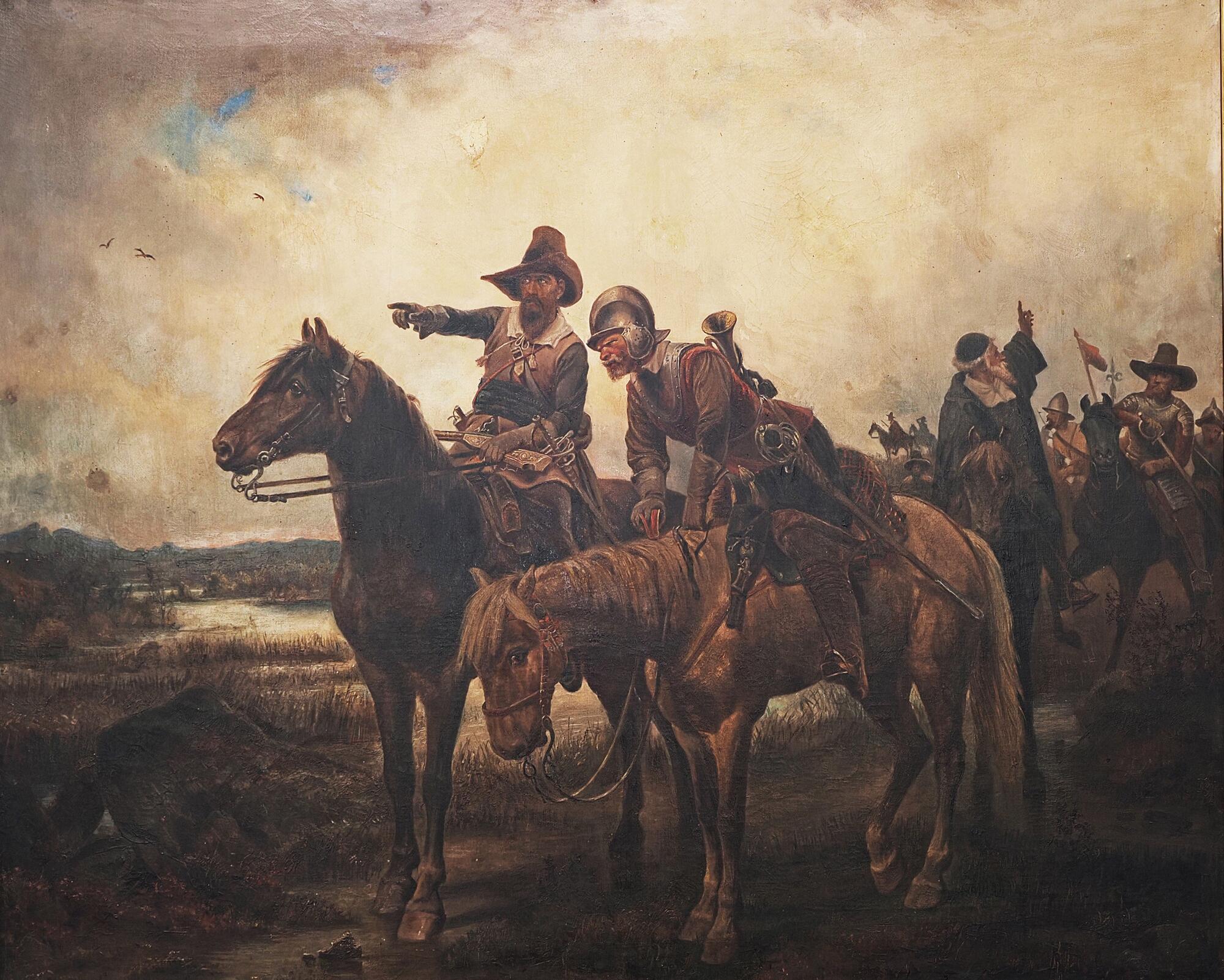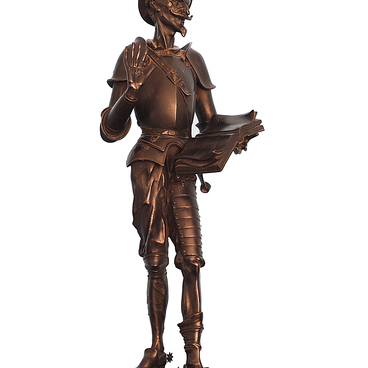This painting was created in 1889 by a German female painter Ida von Kortzfleisch. It’s a copy of a same-name painting by a battle painter Wilhelm Camphausen.
Wilhelm Camphausen was a prominent painter, who worked in battle, historical, and portrait genre. He was born in 1818 in Dusseldorf and graduated from the Royal Academy of Fine Arts. He was called into the Army where he worked as a field painter. It was the time in the army which inspired him to became a battle painter. Since then the soldier’s image played a special part in his art. The artist was also very careful about the precise reproduction of a historical costume.
The procession of puritans crossing the river is depicted on Puritan Horsemen by Wilhelm Camphausen. Puritans are the Protestants, followers of Calvinists, who argued against the official Catholic Church. Their fight for their values resulted in the religious conflict and is known as the Thirty Years’ War (1618-1648).
Among Camphausen’s works of the mature period are such paintings as Frederick II and Bayreuth at Hohenfriedeberg Dragoon, Parade in front of Frederick II near Potsdam (1863), Blyukher’s Waftage Across the Rhine at Kaub (1860), equestrian portraits of prince Heinrich and prince Leopold Dessau (1859).
The painter passed away in 1885.
Ida von Kortzfleisch (1850-1915), an author of the painting, which is now in the collection of the Borisoglebsk History and Art Museum, was born in Pillau (now Baltiysk, Kaliningrad Oblast). Most of her works were signed Pillau, but in case with the Puritan Horsemen there’s a signature Kortzfleisch on the flipside.
The German artist became well-known for her active social work. In 1870 she opened a military hospital, in 1894 she took part in the Women’s movement. The educational question was very important for Ida von Kortzfleisch, so she founded a Higher Women’s School for educating girls from the noble families. There they were taught not only house work and garden work, but were also motivated to give back to the community.
However, having founded this educational institution, Ida von Kortzfleisch didn’t stop and continued to create such institutions around the whole territory of Prussia.



